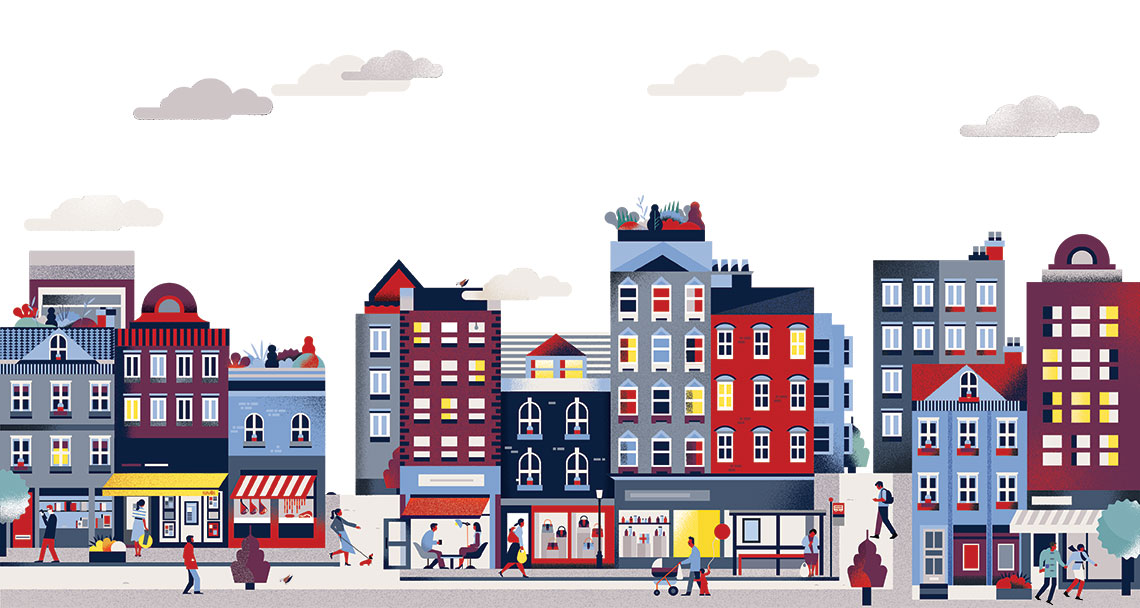There are myriad reasons that humans gather together – few of which have changed in centuries. The first age of cities – urban centres surrounded by agrarian landscapes – facilitated human interaction in religion, politics, arts and commerce. It lasted for millennia, but the Industrial Revolution changed the way cities functioned. Industrialisation heralded a second urban age, when access to raw materials was the key location factor and citizens became a unit of production. Then, in the third age, citizens became consumers, so mercantile cities were located close to markets or ports.
In the late 20th century, fourth-age cities concentrated financial capital. This was reflected in real estate: big buildings on big grids occupied by big, finance-related tenants. The globalisation of capital was reflected in premier-league, world cities.
Out of this legacy of car-dominated, high-cost, sometimes congested and increasingly difficult-to-live-in fourth age cities, we have observed the rise of the digital, or fifth-age, city.
Some people think the digital city will be a dystopian environment dominated by machines. But evidence from Savills TechCities research programme and other studies suggests successful fifth-age cities are ones that function and behave more like those of the first age. When a handheld device can provide access to everything everywhere, and people no longer have to be in a particular place to live, work and play, authentic, real-world experiences and face-to-face encounters become more highly valued. Active, vibrant, mixed streets enable serendipitous encounters and create successful relationships – of all sorts. So, good city neighbourhoods have a social, as well as an economic, value.
In fifth-age smart cities, young citizens are happy to cooperate and make urban life more efficient. They share data (smartphones), homes (Airbnb) and working space (co-working). In developed countries, these citizens are skilled, scarce and globally footloose, so employers are attracted by the cities that attract them.
Consequently, it is HR departments rather than facilities management that drive demand for workspace leases. Good city neighbourhoods are at a premium. As access to human capital is more important than proximity to financial capital, old measures of office grade and quality matter less than the local street scene.
The preference for urban ‘live-work-play-stay-make’ accommodation has an impact on real estate and its investment attractiveness. Investment in ‘multifamily’ rental housing, for example, is rising as younger generations prefer to rent affordable homes in attractive urban centres, rather than to own in the suburbs.
New development, redevelopment and refurbishments work best when they are connected to the cultural, commercial and leisure hub of the city. Appropriate and well-managed regeneration can rehabilitate local economies and create a greater social and property mix. New waves of residents, workers and employers create significant value and opportunities for locals as well as the investors prepared to back appropriate regeneration and refurbishment of old buildings.
When demand for housing grows beyond the traditionally attractive urban neighbourhoods, it has to be satisfied by newly created ones of the same quality. But these are rare. If not delivered, the result is gentrification of other neighbourhoods, which risks displacing existing populations.
Fewer city-centre regeneration opportunities mean that declining suburbs will be scrutinised for urbanisation potential, although new land ownership and business models may be needed to fulfil it. Meanwhile, outlying but accessible towns and cities with the right streetscape and urban fabric are attracting young, creative workers unable to compete for high-price space in the big cities.
Investors could do well to look more closely at European cities which, although small, offer unique and attractive urban experiences. Cities such as Dublin, Amsterdam, Berlin, Stockholm and Copenhagen are already punching above their weight. Other low-cost but highly valued cities such as Warsaw, Prague, Bucharest and Budapest have the potential to join them.
Smaller cities, such as Nashville, Charlotte, Durham, Austin and Portland in the US; Parramatta, Hobart and Newcastle, NSW in Australia; and Glasgow, Manchester and Bristol in the UK, are becoming increasingly economically successful by attracting productive people and companies.
Fifth-age cities are dispersed and many-centred. They make it logical for real-estate investors to view hitherto secondary, even tertiary, locations and ‘alternative’ use classes as lower risk than previously. Investing in flexible, multi-function buildings on good streetscapes in rising neighbourhoods may make more sense than some conventional asset classes.




